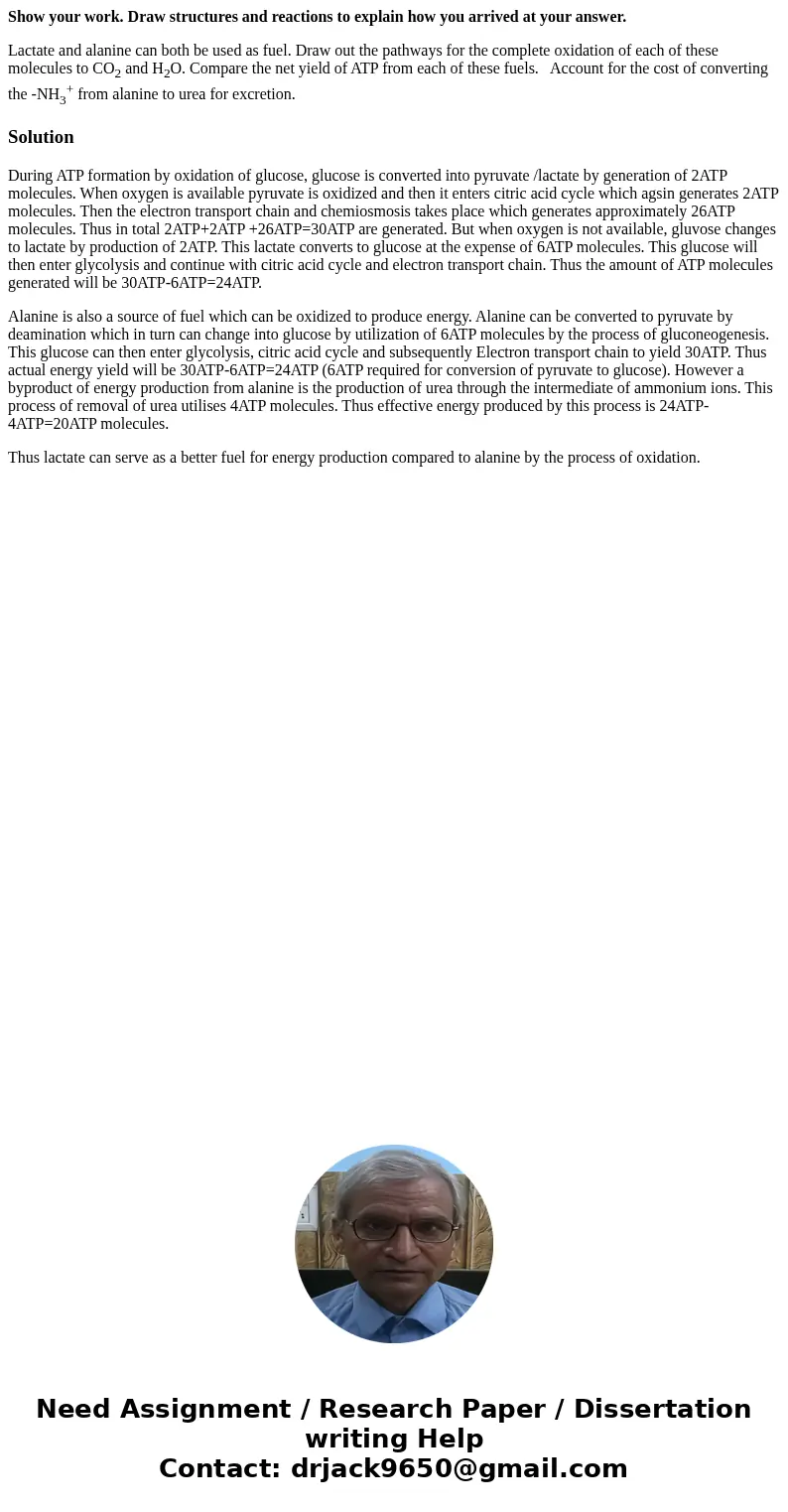Show your work Draw structures and reactions to explain how
Show your work. Draw structures and reactions to explain how you arrived at your answer.
Lactate and alanine can both be used as fuel. Draw out the pathways for the complete oxidation of each of these molecules to CO2 and H2O. Compare the net yield of ATP from each of these fuels. Account for the cost of converting the -NH3+ from alanine to urea for excretion.
Solution
During ATP formation by oxidation of glucose, glucose is converted into pyruvate /lactate by generation of 2ATP molecules. When oxygen is available pyruvate is oxidized and then it enters citric acid cycle which agsin generates 2ATP molecules. Then the electron transport chain and chemiosmosis takes place which generates approximately 26ATP molecules. Thus in total 2ATP+2ATP +26ATP=30ATP are generated. But when oxygen is not available, gluvose changes to lactate by production of 2ATP. This lactate converts to glucose at the expense of 6ATP molecules. This glucose will then enter glycolysis and continue with citric acid cycle and electron transport chain. Thus the amount of ATP molecules generated will be 30ATP-6ATP=24ATP.
Alanine is also a source of fuel which can be oxidized to produce energy. Alanine can be converted to pyruvate by deamination which in turn can change into glucose by utilization of 6ATP molecules by the process of gluconeogenesis. This glucose can then enter glycolysis, citric acid cycle and subsequently Electron transport chain to yield 30ATP. Thus actual energy yield will be 30ATP-6ATP=24ATP (6ATP required for conversion of pyruvate to glucose). However a byproduct of energy production from alanine is the production of urea through the intermediate of ammonium ions. This process of removal of urea utilises 4ATP molecules. Thus effective energy produced by this process is 24ATP-4ATP=20ATP molecules.
Thus lactate can serve as a better fuel for energy production compared to alanine by the process of oxidation.

 Homework Sourse
Homework Sourse